82 F. high in the Twin Cities Wednesday.
82 F. average high on August 6.
86 F. high on August 6, 2013.
August 6 in Minnesota Weather History. Source: MPX National Weather Service:
1968: 7.09 inches of rain fell at Mankato. 1,200 homes had slight to heavy damage. Highways 169 and 22 were blocked by mud slides.
1955:
The climate record of George W. Richards of Maple Plain ends. He
recorded weather data with lively notations on phenology and weather
events. He began taking observations when he was eleven in 1883. He
continued to take observations for 72 years, with 66 years as a National
Weather Service Cooperator.
1896: Final day of a massive heat wave with 104 at Le Sueur and Mazeppa.
1863:
Forest City observer sees what he calls a "perfect tornado." He noted
that it "drove principally from west to east and lasted about one half
hour."
Winter Trepidations
I
live in a state of perpetual paranoia, a low-grade migraine of fear
that I'll miss a major weather disaster somewhere on the planet for our
corporate customers.
That's why I sleep with one eye open, waiting
for the emergency cell-phone PING! alerting me to pay attention.
Because there's always something to track and fret about.
Hawaii
is about to experience the equivalent of a 12-24 hour severe
thunderstorm as Hurricane Iselle arrives, possibly impacting the Big
Island as a Category 1 storm. Typhoon Halong is nearing Japan; wildfires
are raging out west; rare tornadoes sighted from Bulgaria to Istanbul
in recent days. Never a dull moment.
But the odds, statistically,
of next winter rivaling last year's painful polar vortex are exceedingly
small. St. Paul has a better chance of annexing Minneapolis; the
probability of a similar duration of cold and snow roughly equivalent to
the odds of me becoming a professional Russian ballerina.
Instability
T-showers should stay south & west of the metro into Saturday;
highs poking into the low 80s into next week. T-storms drift into town
Monday & Wednesday. Looks like a mild case of Dog Days as far out as
I dare look.
And please don't worry about next winter. Wait, how do you put on these fancy little slippers again?
Here's Everything You Need To Know About The Hawaii Hurricanes.
Iselle is the one to watch later today into Friday - possibly striking
the Big Island as a rare Category 1 storm. A Hurricane Warning is posted
for the Big Island, which should take the brunt of the storm. I suspect
Julio will weaken and pass north of the island chain.
The Vane at Gawker has some interesting perspective; here's a clip: "...
The
latest advisory from the Central Pacific Hurricane Center shows Iselle
packing sustained winds between 75 and 80 MPH by the time it makes
landfall, with higher gusts possible. Provided that the center stays
close to the forecast path and makes landfall on the Big Island, the
eastern side of the island will take the brunt of Iselle's energy.
Again, if the center tracks south, the storm will have less of an
impact, and it if tracks further north, the strongest winds could impact
more heavily populated islands..."
* Map above courtesy of the Central Pacific Hurricane Center, which has Iselle's latest position, intensity and track
here.
Hurricane Hunters Fly Into Hurricane Iselle For Life-Saving Data.
A State of Emergency in Hawaii - this should be the first direct strike
since Hurricane Iniki in 1992. Mississippi is a long way from Hawaii,
but there is no substitute to getting data from inside the storm,
information that can make computer forecasts more accurate and reliable.
Here's an excerpt from
The U.S. Air Force: "
Airmen
with the 53rd Weather Reconnaissance Squadron, also known as the
Hurricane Hunters, deployed to Joint Base Pearl Harbor-Hickam, Hawaii,
from Keesler Air Force Base, Mississippi, Aug. 5 to collect weather data
in Hurricane Iselle as it approaches the Hawaiian Islands. The team of
reservists flew into Iselle Tuesday evening and the morning of Aug. 6 to
collect weather data to assist forecasters in determining the status of
the storm, which is now a category 1 hurricane. The data the Hurricane
Hunters provide to the National Hurricane Center in Miami and the
National Weather Service's Central Pacific Hurricane Center in Honolulu
increases the accuracy of the forecast up to 25 percent, said Maj. Jon
Brady, a 53rd WRS aerial reconnaissance weather officer, or ARWO..."
Midwest Soakers.
A parade of heavy T-storms rippling along a frontal boundary will drop
some 3-6" rains from northern and central Missouri into central Illinois
into early Saturday; more (minor) flooding possible near Washington
D.C. and Richmond. With the exception of far southwest MInnesota much of
Minnesota stays dry and a few degrees warmer than average into Sunday. 4
KM WRF animation showing 60-hour accumulated rainfall amounts: NOAA and
HAMweather.
Weekend Details.
Temperatures slowly warm over the weekend; a light south/southeast
breeze with slowly rising dew points and hazy (smoky) sunshine both
days. We're finally seeing some real summer weather, even on weekends
(without the sizzling heatwaves). Better late than never...
Back to the 80s.
Earlier runs of the European/Norwegian model suggested a cooling trend
by the end of next week, but the latest run seems to squash any hint of
cooler, Canadian air, keeping highs in the 80s into most of next week
with dew points in the sticky-zone. A sputtering cool front may set off a
T-storm Monday, a better chance of heavier, more widespread T-storms
next Wednesday & Thursday. MSP Meteogram: Weatherspark.
Sizzling Heat for Much of the Northern Hemisphere. Here are a few nuggets from a
Decoded Science article that caught my eye: "...
Delhi,
India suffered through an incredibly hot June. Temperatures topped 100
degrees on 29 consecutive days; 8 days in a row saw the mercury climb to
110. The seasonal monsoon brought some relief in July, and now
temperatures are below average, with with the temperature on some days
in the coming week remaining in the 80s. Moscow, Russia has had an
amazing spell of warm weather, with temperatures over 90 on six
consecutive days last week. The next ten days should see highs in the
80s. This may not seem like a big deal if you live in Texas, but the
normal high temperature in Moscow at this time of year is 72. These
temperatures present an attention-worthy departure from normal —
consistent with, but not proof of, global warming..."
Rosetta Spacecraft Set For Unprecedented Close Study of a Comet. This sounds like science fiction, but it's reality. Where's Bruce Willis when you need him?
The New York Times reports; here's a clip: "
After 10 years and four billion miles, the European Space Agency’s Rosetta spacecraft
will arrive at its destination on Wednesday for the first extended,
close examination of a comet. The last in a series of 10 thruster
firings over the past few months will slow Rosetta to the pace of a
person walking, about two miles per hour relative to the speed of its
target, Comet 67P/Churyumov-Gerasimenko, at a distance of about 60 miles..."
Man-Made Noctilucent Clouds. Here's an interesting nugget, courtesy of
spaceweather.com: "...
On
Tuesday morning, August 5th, a SpaceX Falcon 9 rocket lifted off from
Cape Canaveral carrying the AsiaSat 8 telecommunications satellite.
About an hour and a half after the 4 AM launch, electric-blue clouds
appeared over Orlando FL. "These clouds appeared just before sunrise,"
says photographer Mike Bartils. These are, essentially, man-made noctilucent clouds
(NLCs). Water vapor in the exhaust of the rocket crystallized in the
high atmosphere, creating an icy cloud that turned blue when it was hit
by the rays of the morning sun.."
Photo credit: Mike Bartils.
A Gold Medal, Seriously Committed Weather Observer. The New York Times
highlights a 101-year old volunteer weather observer living on Long
Island who has been tracking weather for 84 years; here's an excerpt:
"...
Who this is is not some nicely tanned surfer checking a
thermometer when he is not catching a wave, as one might expect in the
Hamptons, but a 101-year-old volunteer who has taken weather readings
for 84 years. Twice a day, every day, he has recorded the temperature,
precipitation and wind from the same area of Bridgehampton. He has been
at it through 14 presidencies, 13 New York governorships and 14
mayoralties in that city 96 miles away. The Weather Service says he has
taken more than 150,000 individual readings..."
Photo credit above: "
Richard
G. Hendrickson, 101, checked his backyard weather station on Long
Island on Saturday, sheltered by his granddaughter Sara. His unbroken
reporting streak is a record." Credit Nicole Bengiveno/The New York Times.
Top 10 States Leading the U.S. in Solar Energy Growth. Minnesota isn't on the Top 10 List, not yet.
EcoWatch has the article; here's a clip: "...
In fact, the U.S. solar industry had a record-shattering year in 2013. A report released today by Environment America, Lighting the Way: The Top Ten States that Helped Drive America’s Solar Energy Boom in 2013, takes a look at the 10 states responsible for 87 percent of that growth. They are:
1. Arizona
2. California
3. Colorado
4. Delaware
5. Hawaii..."
Photo credit: "Rocio
Farias, a solar panel installer at SolarCity, works on a house in
Camarillo, Calif., June 27, 2014. Farias, who supervises six other
installers, says it’s satisfying to turn on a solar panel system and
show people their electric meter going backward, sending power to the
grid." (J. Emilio Flores/The New York Times)
DOT: Rail Insurance Inadequate for Oil Train Accidents.
At some point the law of averages will catch up with us and there will
be a tragic incident somewhere in the United States; is the insurance
against such a disaster adequate and sufficient? Here's a clip from
Politico: "
Most
freight railroad insurance policies couldn’t begin to cover damage from
a moderate oil train accident, much less a major disaster. And the
Department of Transportation’s own database of oil train incidents is
flawed because some railroads and shippers provide incomplete
information that far understates property damage. Those conclusions come
from a DOT analysis of its own rule proposed to address the series of
troubling derailments across North America as shipments of oil by rail
surge..."
Photo credit above: "
The maximum amount of coverage available is $1 billion per carrier, per incident." | AP Photo.
5 Diseases That Are Scarier Than Ebola. If you're not already depressed enough, fear not, this article at
Mother Jones
will tip you over the top into a deep funk. It turns out the flu is at
the top of the list, new strains of a mutating flu that can do more than
trigger fever and sniffles. Here's an excerpt: "
Given the obsessive coverage
of two American aid workers being treated for Ebola in Atlanta, you'd
think we're days away from a stateside outbreak. PSA: We're not. To
date, not a single person has ever contracted Ebola in the United
States. The likelihood that two isolated patients will
spread the disease is nearly zilch. If you're hell-bent on worrying
about getting a disease, though, fear not—there are plenty to go around.
I asked infectious disease experts on which pathogens they found most
frightening..."
Image credit above:
kletr/Shutterstock.
How To Keep Data out of Hackers' Hands. It's easy to get lazy with online passwords, but there are some steps you can take to lower the risk. Here's an excerpt from
The New York Times: "...
The
first step, as always, is to change passwords for sites that contain
sensitive information like financial, health or credit card data. Do not
use the same password across multiple sites. Try a password manager
like LastPass or Password Safe,
which was created by security expert Bruce Schneier. These sites create
a unique password for each website you visit and store them in a
database protected by a master password that you create. That sounds
dangerous, but password managers reduce the risk of reused passwords or
those that are easy to decode..."
Want To Feel Powerful? Pump Up The Bass. If any didn't understand the link between music and emotion, even behavior, this article at
Pacific Standard clears that up; here's a clip: "...
But stirring sounds aren’t simply a way of generating excitement or enthusiasm. A new study
finds certain types of music—especially tunes with a heavy bass
beat—can make one feel more powerful. This sense of confidence and
ability, the researchers add, can subsequently shape the way we think
and behave. “The effect of music appears to manifest itself not only in
its ability to entertain, but also in the ability to imbue humans with a
real sense of power,” a research team led by Dennis Hsu of Northwestern University writes in the journal Social Psychological and Personality Science..."
Image above courtesy of the Minneapolis-based band,
The Lost Wheels.
Floating Krystall Hotel Will Offer Bedside Views of the Northern Lights. Well this seems like a pretty good idea, finally, a hotel where I can ponder the Aurora Borealis.
Gizmag reports: "
Architecture firm Waterstudio and developers Dutch Docklands
have been given the go-ahead to construct a floating luxury hotel near
Tromsø, Norway. Situated within the optimal Aurora Borealis (or Northern
Lights) viewing zone, the Krystall hotel will feature a glass roof so
guests can enjoy one of nature's finest spectacles from their beds.
Finer details on the five-star hotel's structure are yet to be revealed
(as is the budget), but early renders depict a snowflake-like structure
that floats but remains in a stationary position.."
"Apparently" This Kid is a Viral Superstar. If you didn't see this video clip yet, you should. It brightened up an otherwise forgettable day, courtesy of
TVSpy
and WNEP-TV, my first TV station gig in northeastern Pennsylvania;
still one of the best local stations on the planet. Here's a clip: "
He’s gone viral. A five-year-old named Noah Ritter, discovered by a WNEP news crew at the Wayne County Fair in Pennsylvania, grabbed the mic and began riffing on camera about the fair, his family, and life. Apparently:
Utilising
the word ‘apparently’ like only a child who just discovered how to use a
word can, Noah gave an account of the scariness of the rides along with
an insight into how hard it is being a kid and apparently having to
watch your dad’s stupid shows all the time..."
TODAY: Partly sunny, pleasant. Dew point: 59. Winds: SE 10. High: 82
THURSDAY NIGHT: Mostly clear, touch of fog. Low: 62
FRIDAY: Warm sun, the lakes beckon. High: near 80
SATURDAY: Hazy sun, few complaints. Dew point: 62. Wake-up: 65. High: 82
SUNDAY: Sticky sun, probably dry. Winds: SE 8. Wake-up: 65. High: 84
MONDAY: Less sun, passing T-storm. Dew point: 65. Wake-up: 67. High: 83
TUESDAY: Plenty of sun, still warm. Wake-up: 63. High: 81
WEDNESDAY: Sunny start, heavy PM T-storms? Wake-up: 62. High: 83
Climate Stories....
New Research Links Tornado Strength, Frequency to Climate Change. This item at
eurekalert.com caught my eye; here's an excerpt: "...
Published
Wednesday in the journal Climate Dynamics, Professor James Elsner
writes that though tornadoes are forming fewer days per year, they are
forming at a greater density and strength than ever before. So, for
example, instead of one or two forming on a given day in an area, there
might be three or four occurring. "We may be less threatened by
tornadoes on a day-to-day basis, but when they do come, they come like
there's no tomorrow," Elsner said. Elsner, an expert in climate and
weather trends, said in the past, many researchers dismissed the impact
of climate change on tornadoes because there was no distinct pattern in
the number of tornado days per year. In 1971, there were 187 tornado
days, but in 2013 there were only 79 days with tornadoes..."
*
Phys.org has more details on the possible link between a changing climate and tornado frequency/strength.
Warmer Ground Blows "Rather Spooky" Crater in Gas-Rich Russian North.
Bloomberg
has the latest on the mysterious craters showing up in Siberia - a
symptom of thawing methane deposits or something else? Here's a clip:
"...
Scientists' early assessment is just that, preliminary, but not
without data behind it. The bottom of the crater tested for methane
levels up to 9.6 percent of the air content, which is about 54,000 times
normal levels. The raised levels could be part of a pervasive increase
in methane, a powerful greenhouse gas, escaping into the atmosphere. Two
similar holes have been discovered in northern Siberia. More worrisome
even than spontaneous cratering are the gas spikes observed at
monitoring stations around the Arctic circle, data that prompts
ice-and-climate scientist Jason Box to ask with alarm: WTF?..."
Photo credit above: "
A
crater recently discovered in the Yamal Peninsula, in Yamalo-Nenets
Autonomous Okrug, Russia on July 16, 2014. Russian scientists believe
the 60-meter wide crater, discovered recently in far northern Siberia,
could be the result of changing temperatures in the region." Photographer: Press Service of the Yamalo-Nenets Autonomous Okrug Governor/AP Photo.
Russian Scientists: Global Warming Played Major Role in Siberian Craters.
MSNBC has an interesting interview the other night - could this be a
sign of something more alarming, or is it random and not worth worrying
about? Here's a clip and link to the video segment/interview at
EcoWatch: "...
scientists
believe the massive craters are caused by thawing permafrost
and directly linked to the abnormally hot Yamal summers of 2012 and
2013. As temperatures rose, the permafrost thawed and collapsed,
releasing methane that had been trapped in the icy ground. Joining
Schultz last night was Dr. Reese Halter, distinguished
conservation biologist and author of nine books, who said, “This is a
ticking time bomb. The only thing we can do is reduce the amount of
fossil fuels that we are spewing daily, 85 million tons of greenhouse
heat-trapping gas, into the atmosphere...”
Must-See Video: Arctic Emergency, Scientists Speak.
The video runs 28 minutes, but it shows how our increasingly chaotic
weather may be a symptom of larger changes, sparked by faster warming of
the Arctic and far northern latitudes in recent years.
EcoWatch has a link: "
This
video provides the best explanation I have ever heard of how increasing
carbon in the atmosphere changes the weather. It helped me understand
the carbon-climate connection at an all new level. It also explains why the release of arctic methane
is an important tipping point. For those of you who enjoy learning from
the world’s top scientists about something that will change your life
and the future of your children and grandchildren, this is an important
video to watch. Please watch it and then share it with others..."
Fire and Ice: What I Did On My Summer Vacation. Here's an
EcoWatch excerpt from climate scientist Michael Mann, who visited Montana's Glacier National Park: "...
The
once great mountain glaciers that gave the park its name have retreated
dramatically in recent decades. Of the roughly 150 glaciers that
existed in the park when it was established in 1910, only 25 remain
today. You can’t help but notice their tenuous appearance as you
approach the continental divide heading up Going-to-the-Sun road toward
Logan Pass, and as you hike the nearby trails watching Pika nervously
scurry about as if they somehow sense a looming threat. Climate model
projections indicate
that Glacier National Park might lose all of its glaciers by 2030 as
human-caused global warming proceeds. Perhaps it will be renamed “The
Park formerly known as Glacier...”
Photo credit above: "
Goodbye to Glaciers: Of the roughly 150 glaciers that existed in the park when it was established in 1910, only 25 remain today." Photo credit: Michael Mann.
White House: Climate Change Fuels Intense Fire Seasons. Is
there a link between a warming/drying climate over the western USA and a
longer, more intense fire season? If you look at the data and the
trends it sure appears that's the case. Here's an excerpt from
The Hill: "
As
California declared a state of emergency this week over growing
wildfires, the White House played the climate change card on Tuesday to
drive home the need for action. In a new video posted
on the White House website, John Holdren, science adviser to President
Obama, details the links between higher temperatures and reduced
moisture in the soil to the increasing number of wildfires in the
western U.S. "While no single wildfire can be said to be caused by
climate change, climate change has been making the fire season in the
U.S. longer and on average more intense," Holdren said in the video..."
A
3 minute YouTube video link from whitehouse.gov highlighting a growing
link between climate change and a longer, more intense fire season is
here.
I didn't realize that the 8 worst wildfire seasons on record,
nationwide, have all occurred since 2000 - and the southeastern USA now
sees an average of 45,000 wildfires a year.
Obama: Not A Single CEO I Talk To Denies Climate Change, Even Those in the Fossil Fuel Industry. Here's a clip from
Business Insider that caught my eye: "...
U.S.
President Barack Obama says that argument doesn't make any sense,
because, according to him, the corporations themselves acknowledge
climate change is occurring. In an interview with The Economist published this weekend,
Obama said most businesses were instead hungry for clarity from
Washington about what kind of regulations would be imposed to address
climate change. "There aren’t any corporate CEOs that you
talk to at least outside of maybe — no, I will include CEOs of the
fossil-fuel industries — who are still denying that climate change is a
factor," Obama said..." (Image: NASA Ames/JPL-Caltech).

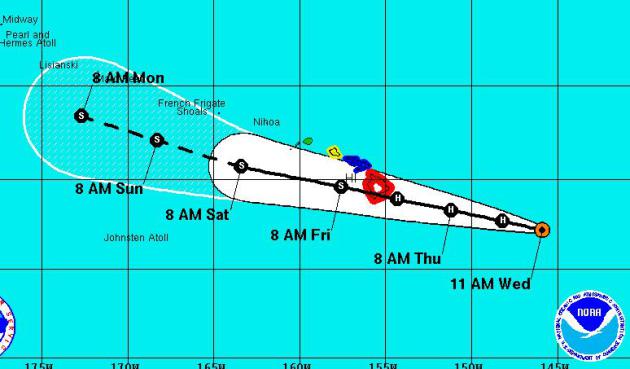
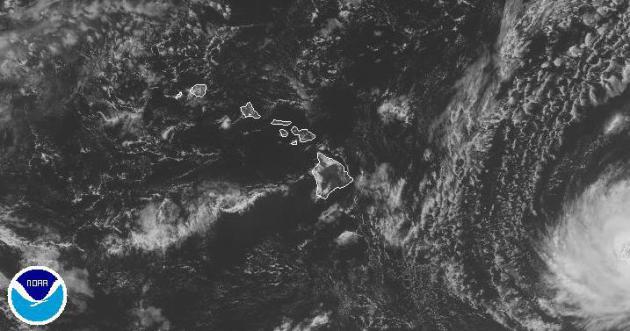
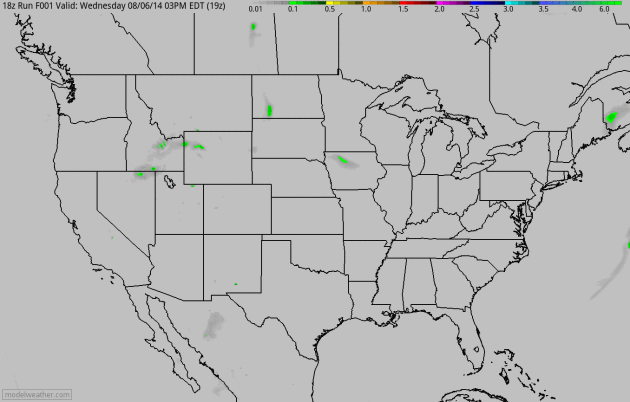
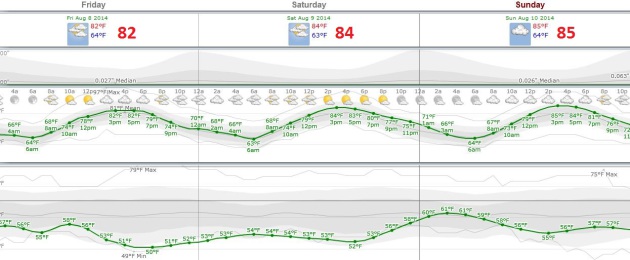
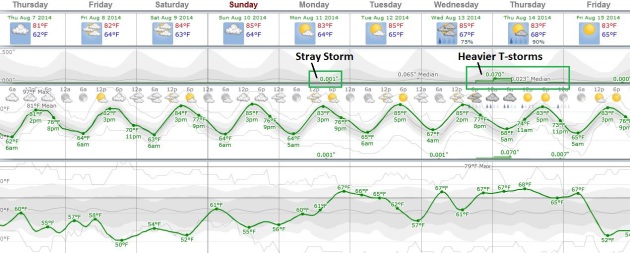



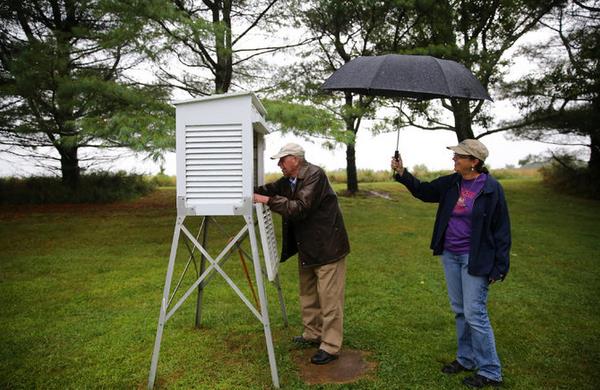

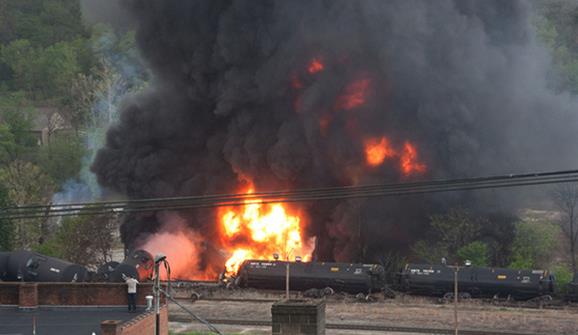
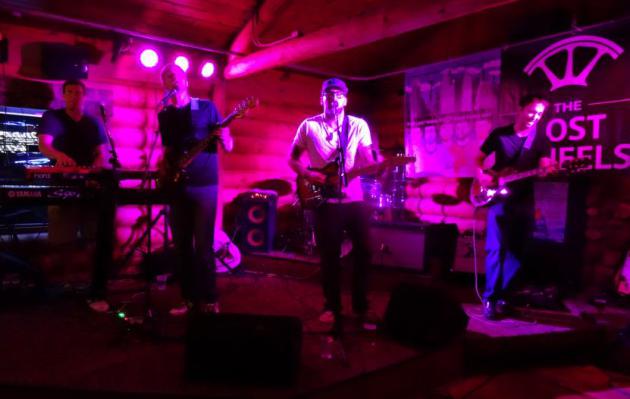
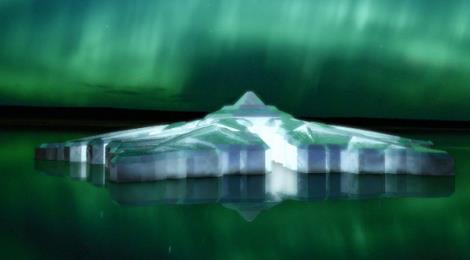




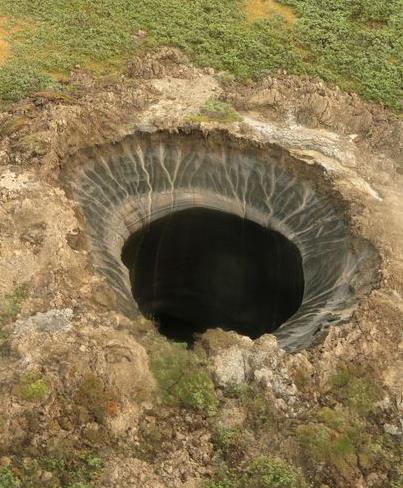
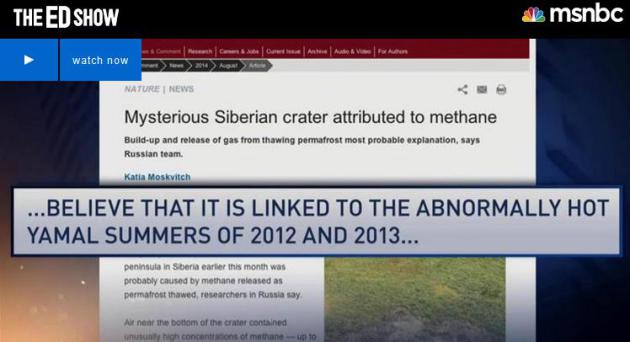


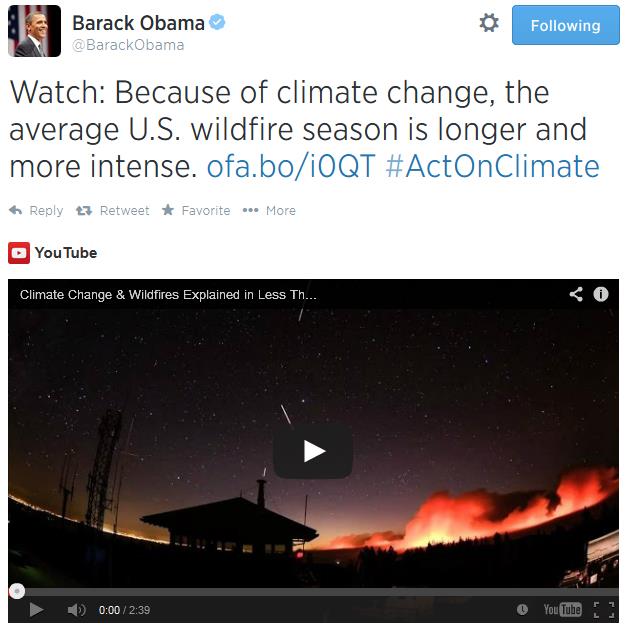
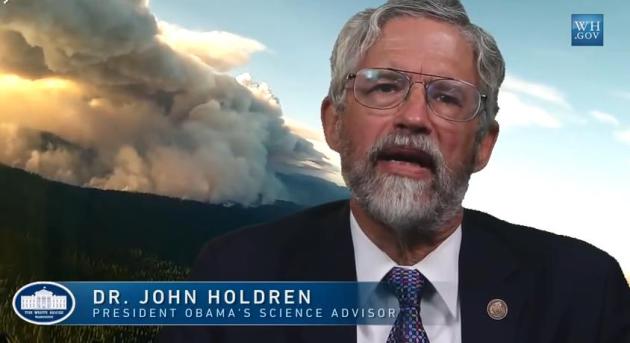
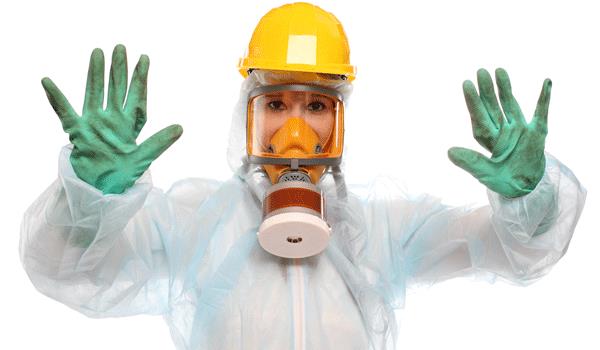

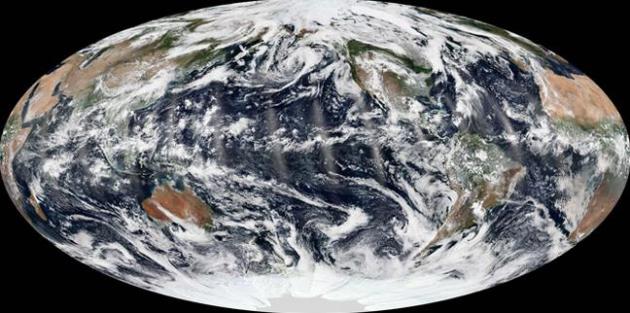
No comments:
Post a Comment